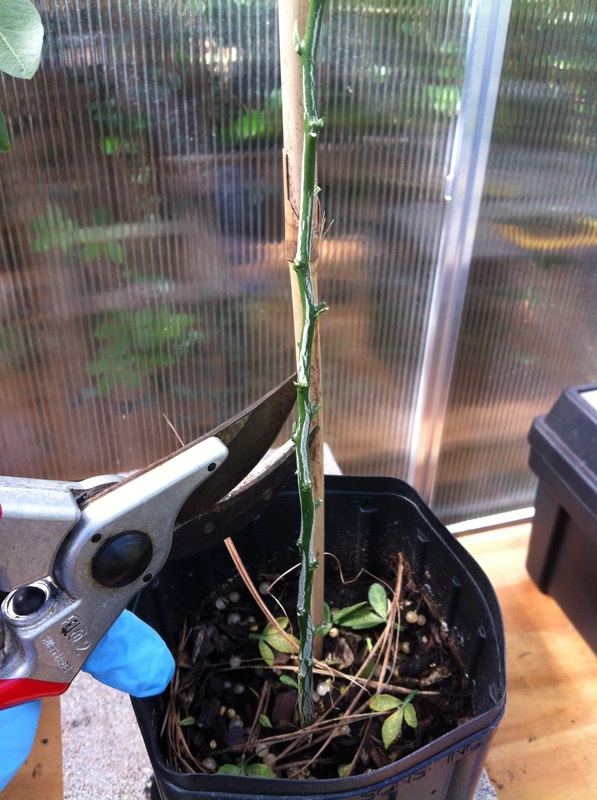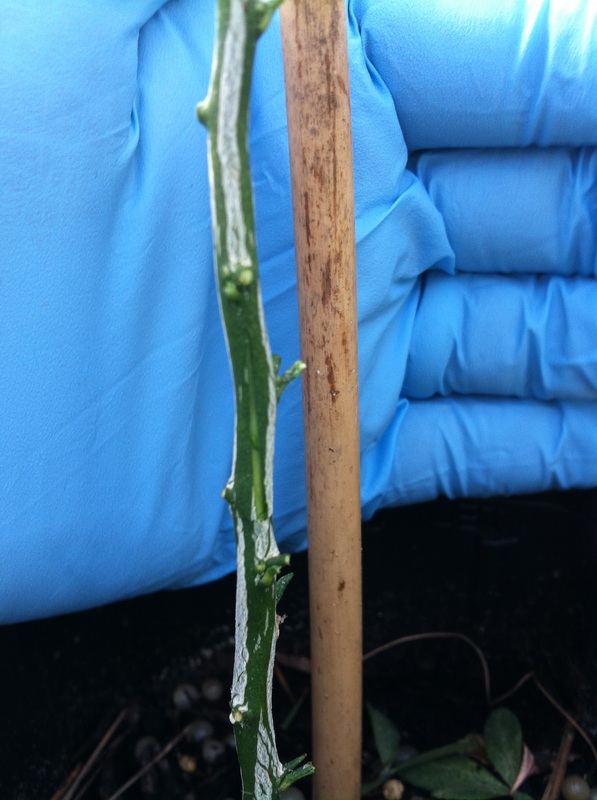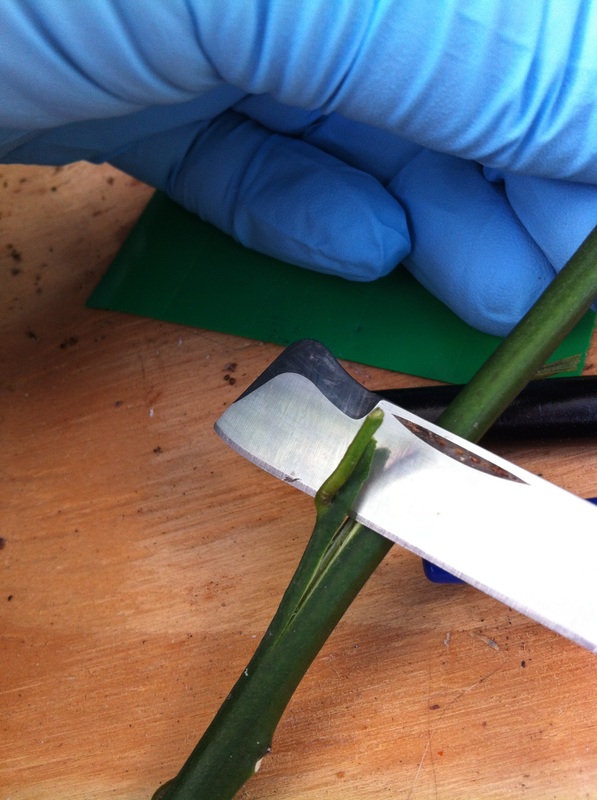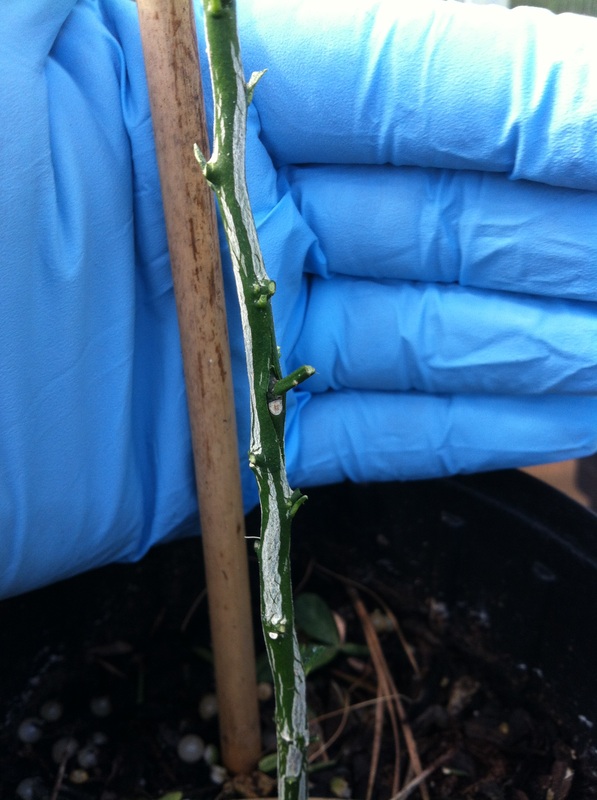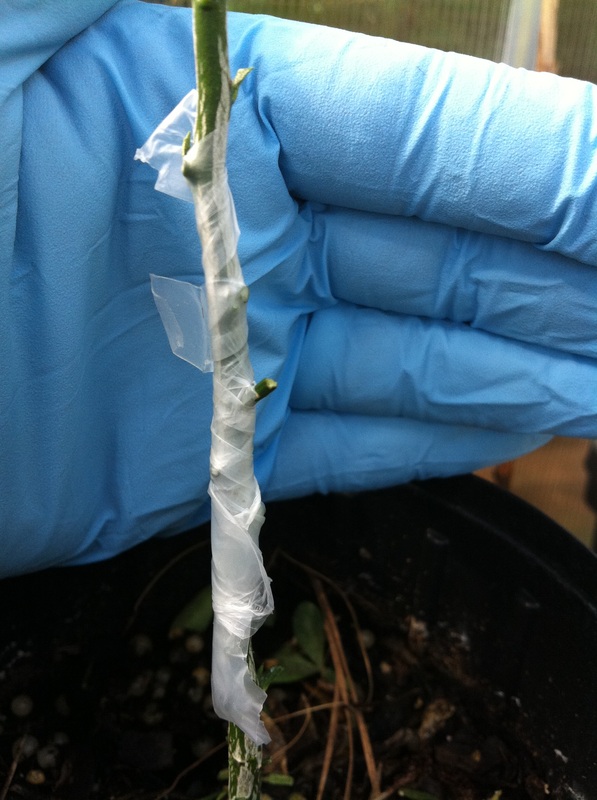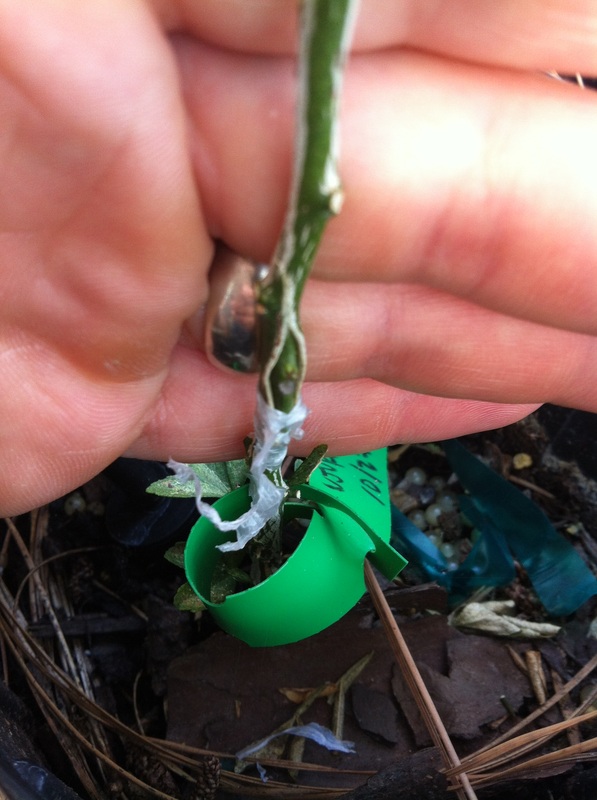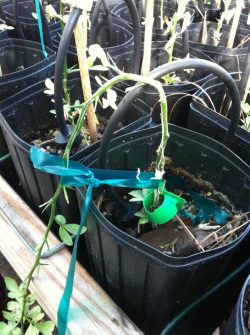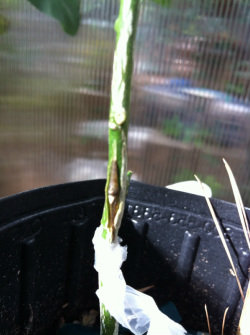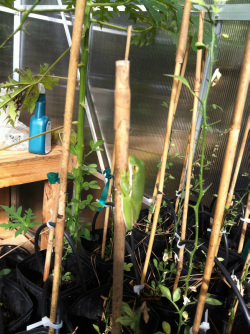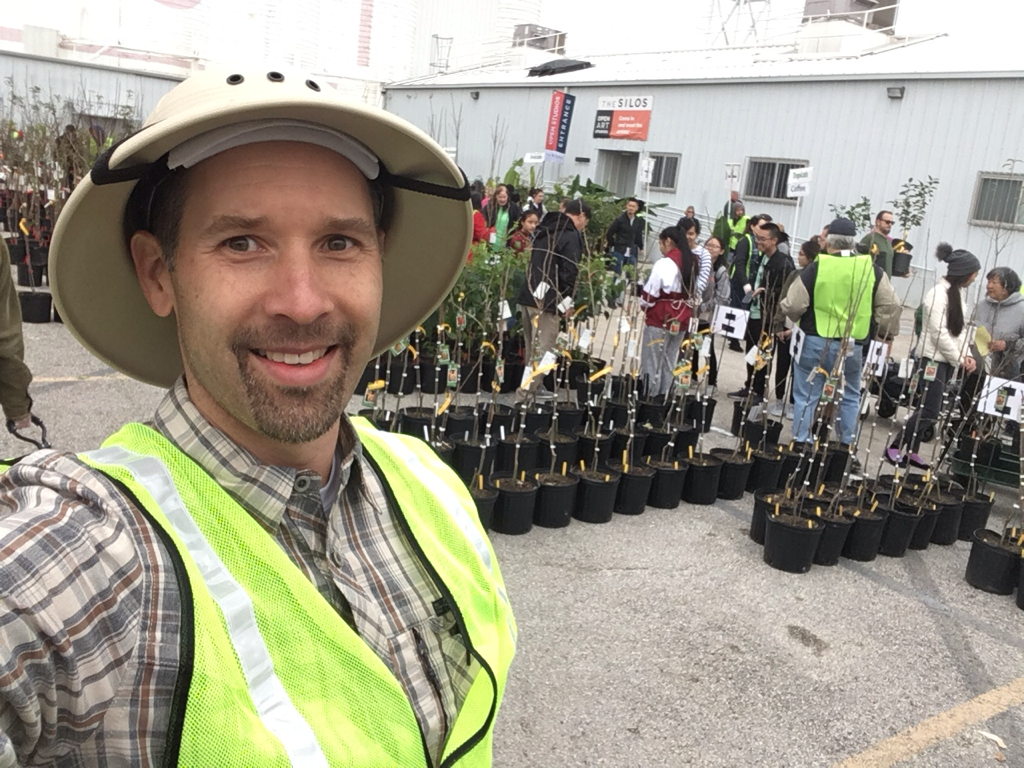
Part of the reason I am not as practiced in t-budding is that I rarely graft for the purpose of propagating new trees. Usually my goal is to graft another variety onto one of my established trees, so I usually use the cleft or the bark inlay grafting methods. The first grafting technique I learned was the cleft graft, so I'm very comfortable with it. I have used the cleft graft on my apples, pears, plums, peaches, citrus, pomegranates, and figs, so I've had a lot of practice, and on more than just citrus trees. Bark inlay grafting is essentially just like t-budding, but done on a larger scale. With bark inlay grafting you insert a small budstick, not just a single bud. I've also had a lot of practice grafting with the bark inlay method, so I think that with a little t-budding practice, I should be able to become comfortable with it as well (or at least passable).
The trifoliate rootstocks I planted in the tall pots last year have grown very well, although not all have reached grafting size. Rootstocks with the same approximate thickness of a pencil are ideal. Even though it was late October and the rootstocks were a little small, a quick test showed that the bark of the rootstocks was still slipping, so I decided it was time for a little t-budding practice. I decided to try to propagate six trees of three varieties: Pong Koa, Cara Cara Navel Orange, and Ujukitsu. Following Texas A&M's instructions I carefully made the inverted T incisions, trimmed the buds from scionwood, and and carefully slid them in. Working as delicately as possible I wrapped them up with parafilm, and began the long two weeks of waiting to see if the buds would take, or if my surgical skills needed further refinement.
I learned a couple of side lessons during this experiment. First of all, the potting soil I used in the tall pots had compacted significantly, which made it difficult to cut the t-shaped incision at the best location on the rootstock. I have since learned that many growers cut their potting soil with pine bark nuggets or cedar chips to keep the potting mix from compacting, acidify it slightly, and to ensure good drainage. In addition, using 50% nuggets or chips significantly lowers the cost. Second, I learned that old parafilm can become brittle, and I found myself having to unwrap a good bit of the more weathered tape on the outside of the to get to the good stretchy stuff within. I also only had 1-inch wide tape, which was kind of awkward to use on such small rootstocks. I'll order some half-inch budding tape before I try again.
Finally, after two weeks had passed, I carefully unwrapped the grafts. Success! Of my six attempts, four were successful. One of the Pong Koas and one of the Cara Caras didn't make it. I realize that's only a 66% success rate, but considering how small the rootstocks were an the fact that I'm still learning, I'm very pleased. I really should have done it earlier in the year though. Now that the days are shorter and the trifoliate is going dormant, the buds probably won't begin to grow until next spring. That's ok, they'll be safe and warm in the greenhouse until then. I don't have any plans to start propagating trees on a large scale, but its nice to be able to share varieties with friends, and to be able to graft budwood from my experimental seedlings onto trifoliate. I've got 40 more rootstocks to practice with when they start growing again next spring!
